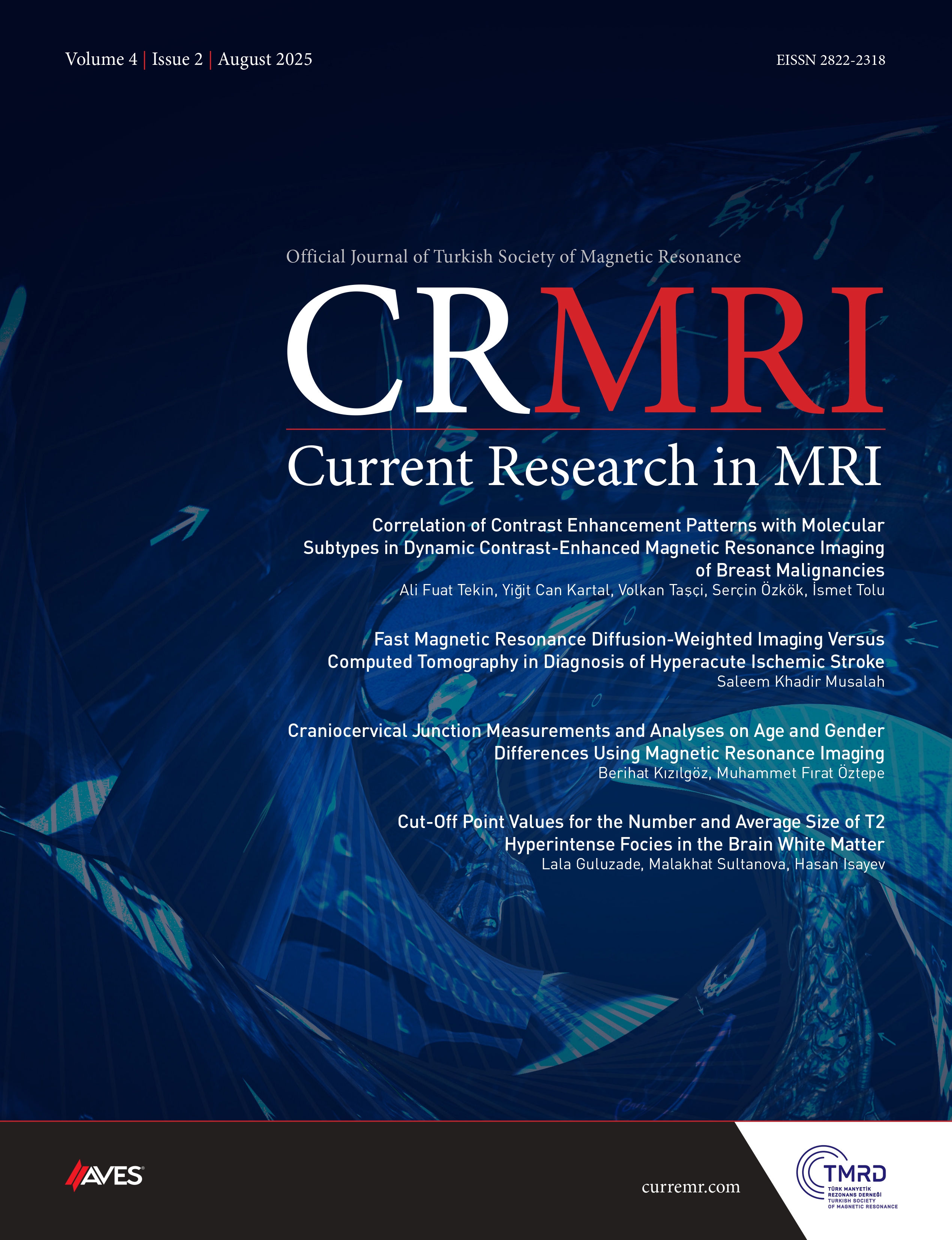Objective: This study aimed to evaluate the use of dynamic contrast-enhanced magnetic resonance imaging (DCE-MRI) to predict the molecular subtypes of breast cancer, with a focus on receptor status.
Methods: The authors retrospectively reviewed breast MRI scans of 154 patients with histopathologically confirmed invasive breast carcinoma who underwent preoperative DCE-MRI between January 2010 and January 2015. Tumors were classified as Luminal A, Luminal B, human epidermal growth factor receptor 2 (HER2)-enriched, or triple-negative based on IHC for ER, PR, and HER2. Contrast-enhanced magnetic resonance imaging findings included time–signal intensity curve patterns and enhancement characteristics. The axillary nodal status and background parenchymal enhancement (BPE) were also recorded.
Results: In total, 154 patients (mean age: 51.4 years; range, 24-80 years) were evaluated. Magnetic resonance imaging findings demonstrated homogeneous internal contrast in 31%, heterogeneous contrast in 40%, and rim enhancement in 29% of the tumors. Regarding molecular markers, ER positivity was observed in 39.4% of patients, PR positivity in 43.5%, and HER2 positivity in 36.4%. The tumor subtype distribution included Luminal A (17.4%), Luminal B (36.8%), and triple-negative (44.5%). Type 1 enhancement was observed in 37.7% of patients, type 2 in 36.4%, and type 3 in 26.0%. A significant relationship was identified between Luminal A subtype and type 3 contrast enhancement (P < .05). Luminal B subtype was significantly associated with increased BPE (types 1 and 2) and contralateral breast enhancement (P < .05). No significant associations were observed between molecular markers or subtypes and lymph node positivity.
Conclusion: Human epidermal growth factor receptor 2-positive tumors have a plateau perfusion pattern and washout kinetics, and triple-negative tumors often exhibit rapid washout. These findings support the continued investigation of DCE-MRI for early subtype prediction and personalized treatment planning.
Cite this article as: Tekin AF, Kartal YC, Taşçi V, Özkök S, Tolu İ. Correlation of contrast enhancement patterns with molecular subtypes in dynamic contrast-enhanced magnetic resonance imaging of breast malignancies. Current Research in MRI, 2025;4(2):27-34.



.png)
